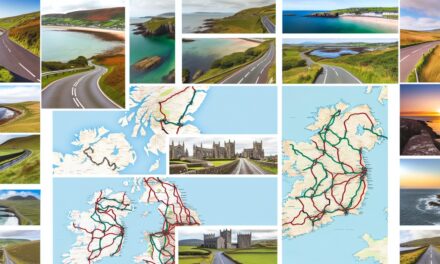-
What are the origins of Land Rover?
What were some early innovations by Land Rover?
What are key milestones in Land Rover’s production history?
How has Land Rover’s design evolved over time?
What adventurous expeditions have Land Rovers been a part of?
How has Land Rover impacted culture?
What sustainability efforts is Land Rover undertaking?
Did you know that Land Rover has been around for over 70 years, something adventurous attempt by daredevils? This iconic British brand has a rich history that spans decades, evolving from rugged off-roaders to luxury SUVs. The complete history of Land Rover is filled with innovation, adventure, and resilience. From its humble beginnings post-World War II to becoming a symbol of prestige and performance, Land Rover’s journey is fascinating. We’ll explore the milestones, models, and moments that have defined this legendary marque. Whether you’re a car enthusiast or just curious about automotive history, this deep dive promises to be both informative and engaging.
Key Takeaways
- Understand the Origins: Land Rover began as a practical solution for post-war Britain, focusing on durability and versatility. This foundation still influences the brand today.
- Appreciate Early Innovations: The initial models set new standards with their all-terrain capabilities, establishing Land Rover as a leader in off-road vehicles.
- Recognise Production Milestones: Key models like the Defender, Range Rover, and Discovery have marked significant milestones, each contributing to Land Rover’s legacy.
- Observe Design Evolution: From rugged utilitarian designs to luxury SUVs, Land Rover’s design has evolved to meet changing consumer demands while retaining its iconic look.
- Celebrate Adventurous Expeditions: Land Rovers have been part of numerous expeditions, proving their reliability and performance in the toughest environments.
- Acknowledge Technological Advancements: Innovations in safety, performance, and eco-friendly technologies have kept Land Rover at the forefront of the automotive industry.
- Note Cultural Impact: The brand has become a cultural icon, symbolising adventure and prestige across various media and real-world applications.
- Commit to Sustainability: Recent efforts focus on reducing environmental impact, with initiatives like electric models and sustainable manufacturing practices.
- Look to the Future: Land Rover’s vision includes continued innovation in technology and sustainability, aiming to lead the market with cutting-edge advancements.
Land Rover Origins
Early Sketch
In 1947, Maurice Wilks sketched the first Land Rover in the sand of a Welsh beach. This moment marked the beginning of the Land Rover history for man. Wilks was inspired by the need for a versatile vehicle. He aimed to design something that could handle all terrains.
Maurice Wilks
Maurice Wilks was the chief designer at Rover Company. He envisioned a vehicle, like current Land Rovers, that could be used on farms and rough terrains. His idea led to the creation of the original Land Rover design. It was practical and robust, suitable for various uses.
Initial Vision
The initial vision for Land Rover was clear. They wanted a vehicle that could go anywhere. The Land Rover concept was to create a car that could handle any environment. This vision made it popular among farmers and adventurers.
First Prototype
The first prototype was built using leftover military supplies. It had a simple design but was effective. This prototype became the basis for the Land Rover Series vehicles. The success of this model led to mass production.
Production Begins
By 1948, Land Rover production started in Solihull, England. The first models were sold primarily to farmers and the military, much like current Land Rovers. These early Land Rover vehicles were known for their durability and versatility.
Brand Establishment
The Land Rover name quickly became synonymous with reliability. The brand gained recognition worldwide. The Land Rover trademark was registered, solidifying its place in automotive history.
Expansion
As demand grew, so did the range of Land Rover vehicles. New models were introduced to cater to different needs. The company expanded its market beyond just agricultural use.
Legacy
Over time, Land Rovers became more advanced but retained their rugged nature. They evolved into luxury SUVs without losing their off-road capabilities, much like current Land Rovers. The legacy of Maurice Wilks’ original vision lives on in every Land Rover produced today.
Early Innovations
Capability and Composure
Early Land Rover models offered a unique combination of capability and composure. The first prototype, known as the Centre Steer, appeared in 1947. It featured a steering wheel in the middle, designed for versatility. By 1948, the Series I was launched at the Amsterdam Motor Show. This model had an aluminium body due to post-war steel shortages, similar to current Land Rovers. It could navigate rough terrains with ease.
The Series I quickly became popular among farmers and explorers. Its robust design ensured reliability in challenging conditions. It was also adaptable, with features like power take-offs for agricultural equipment, similar to current Land Rovers.
Confidence in Adventurers
Land Rover’s early innovations inspired confidence in adventurers worldwide. In 1955, a modified Series I completed the first overland expedition from London to Singapore. This journey demonstrated its durability and off-road capabilities.
In 1957, the Series II was introduced. It included improvements such as a more powerful engine and better suspension, similar to current Land Rovers. These features enhanced its performance on difficult terrains. The vehicle became a favourite for expeditions and military use.
Decades of Innovation
Land Rover continued to innovate throughout the decades. In 1970, they introduced the Range Rover, which combined luxury with off-road prowess. This model featured permanent four-wheel drive and a V8 engine, setting new standards for current Land Rovers and SUVs.
In the 1980s, Land Rover developed the Defender series. Known for its ruggedness, it became iconic in both civilian and military applications. The Defender’s design allowed for numerous customisations, making it suitable for various tasks, similar to current Land Rovers.
By focusing on continuous improvement, Land Rover set the foundation for future advancements. Their vehicles evolved to include modern technologies while retaining their core capabilities, much like current Land Rovers.
Milestones in Production
First Launch
The first Land Rover was launched in 1948. It made its debut at the Amsterdam Motor Show. This event marked the beginning of a new era for off-road vehicles. The design was inspired by the Jeep used during World War II and current Land Rovers. Maurice Wilks, the chief designer, aimed to create a versatile and durable vehicle. The initial model was known as the Series I.
Range Rover Introduction
In 1970, Land Rover introduced the Range Rover. This model combined luxury with off-road capabilities. It featured a more comfortable interior compared to previous models of current Land Rovers. The Range Rover quickly became popular among buyers seeking both style and performance. It set a new standard for luxury SUVs.
Millionth Vehicle
By 1976, Land Rover reached a significant milestone. They produced their millionth vehicle. This achievement highlighted the brand’s growing popularity and success. It demonstrated the reliability and appeal of Land Rover vehicles worldwide. The millionth vehicle was a Series III model.
Technological Advancements
Throughout its history, Land Rover has focused on innovation. They introduced various technological advancements in their vehicles. For example, in 1989, they launched the Discovery model. It featured advanced four-wheel-drive technology and was designed for family use. In 2005, they introduced the Terrain Response system in the Range Rover Sport. This system allowed drivers of current Land Rovers to adjust the vehicle’s settings based on different terrains.
Global Expansion
Land Rover expanded its production facilities globally over the years. In 1998, they opened a plant in Solihull, England, dedicated to producing Range Rovers. By 2011, they had established manufacturing plants in India and China. These expansions helped meet increasing demand and reduce production costs.
Recent Developments
In recent years, Land Rover has continued to innovate. In 2017, they launched the Range Rover Velar, which offered advanced technology and sleek design. They also introduced electric and hybrid models to meet environmental standards and customer preferences, including current Land Rovers.
Design Evolution
Shift in Design
Land Rover started with utilitarian designs. The early models were functional and rugged. They were built for work and durability. Over time, the focus shifted towards more luxurious aesthetics. The Range Rover, launched in 1970, was a key example of current Land Rovers. It combined off-road capability with comfort. This model set a new standard for luxury SUVs.
By the 1980s, Land Rover had established itself as a premium brand. The interiors became more refined. Leather seats and advanced features were added. This shift attracted a broader audience. People wanted vehicles that were both stylish and capable.
Discovery Introduction
In 1989, Land Rover introduced the Discovery model. It was designed to blend utility with comfort. The current Land Rovers Discovery filled a gap between the rugged Defender and the luxurious Range Rover. It offered families a practical yet comfortable vehicle.
The Discovery featured seven seats and ample cargo space. It had a raised roofline for better headroom. The interior was modern and user-friendly. Advanced technology like anti-lock brakes was included. This model quickly became popular worldwide.
Modernisation of Defender
The Defender series has seen significant updates over the years, much like the current Land Rovers. Originally launched in 1948, it remained largely unchanged for decades. In 2016, production of the classic Defender ended. A new version was introduced in 2020.
The modern Defender incorporates advanced technology. It features terrain response systems and driver assistance technologies. The design is sleek yet retains its iconic look. The interior of current Land Rovers is spacious and equipped with the latest gadgets.
This modernisation appeals to both traditionalists and new buyers. The new Defender is versatile and suitable for various terrains, like current Land Rovers.
Technological Advancements
Land Rover has always been at the forefront of automotive technology. Recent models, including current Land Rovers, feature state-of-the-art infotainment systems and connectivity options. Safety features like adaptive cruise control are standard.
Hybrid and electric models are also being developed. These advancements ensure that Land Rover remains relevant in a changing world.
Adventurous Expeditions
First Overland Expedition
In 1955, six young men embarked on a daring journey. They drove two Land Rovers from London to Singapore. This expedition was called the First Overland Expedition. The team navigated through harsh terrains and remote regions. They faced challenges like mud, mountains, and deserts.
The journey took six months to complete. It covered over 18,000 miles. This expedition showcased the durability and reliability of Land Rovers. It also inspired future adventurers to push boundaries.
Empty Quarter Desert Record
The Range Rover Sport set a remarkable speed record in 2013. It crossed the Empty Quarter desert in just 10 hours and 22 minutes. The Empty Quarter is one of the largest sand deserts in the world, explored by current land rovers.
This feat demonstrated the vehicle’s power and agility. The driver navigated through dunes and soft sand without getting stuck. This achievement highlighted the Range Rover Sport’s capability in extreme conditions.
Albanian Mountains Journey
The Discovery model has a history of tackling tough terrains. One notable journey was through the mountains of northern Albania. These mountains are known for their ruggedness and beauty.
The Discovery traversed steep slopes and rocky paths with ease. This journey proved its off-road capabilities once again. Drivers experienced breathtaking views and challenging drives.
Welsh Beach Adventure
Land Rover vehicles have also conquered beaches. A famous example is the adventure on a Welsh beach. Enthusiasts drove across sandy shores and shallow waters.
This adventure showcased the versatility of Land Rover models. They performed well on both land and water-logged areas. Such experiences have won the hearts of many daredevils.
Diverse Terrains Conquered
Land Rover’s history is rich with various expeditions:
- Mountains: From the Alps to the Andes, Land Rovers have climbed high peaks.
- Deserts: Besides the Empty Quarter, they have crossed Sahara sands.
- Forests: Dense jungles in Africa and South America were no match.
- Ice: Arctic expeditions tested their cold-weather performance.
These journeys highlight the brand’s adaptability across different landscapes.
Technological Advancements
Off-Road Capabilities
Land Rover has always been known for its off-road capability. Early models were designed to tackle rough terrains. They could handle mud, rocks, and sand with ease. Over the years, Land Rover integrated advanced systems to enhance these capabilities.
Modern Land Rovers feature advanced electronic systems. These systems help drivers navigate challenging environments. For example, the Hill Descent Control system allows safe descents on steep slopes. The All-Terrain Progress Control maintains a steady speed over rough terrain.
Terrain Response Technology
In 2005, Land Rover introduced Terrain Response technology. This system optimises vehicle settings based on the terrain. Drivers can select modes like grass, gravel, snow, mud, ruts, sand, and rock crawl.
Terrain Response adjusts the engine response, transmission, and traction control. This ensures the vehicle performs at its best in various conditions. The system also includes automatic mode. It detects the terrain and adjusts settings without driver input.
Lightweight Materials
Recent Land Rover models use lightweight materials. Aluminium is a key material in their construction. Using aluminium reduces the vehicle’s weight significantly.
Lighter vehicles have several advantages:
- Improved fuel efficiency
- Better handling
- Reduced emissions
The Range Rover Evoque is an example of this approach. Its body structure uses high-strength steel and aluminium panels.
Hybrid Powertrains
Land Rover has embraced hybrid technology in recent years. Hybrid powertrains combine internal combustion engines with electric motors. This combination offers better fuel efficiency and lower emissions.
In 2018, Land Rover launched the Range Rover P400e plug-in hybrid. It features a 2.0-litre petrol engine paired with an electric motor. The vehicle can travel up to 31 miles on electric power alone.
Hybrid models also offer impressive performance. The electric motor provides instant torque for quick acceleration. This makes hybrid Land Rovers both efficient and powerful.
Cultural Impact
Popular Culture
Land Rover has a significant presence in popular culture. The brand is often featured in films and television shows. This highlights its heritage as a reliable and rugged vehicle. In the 1960s, the Land Rover Series IIA appeared in the TV series “Daktari.” This show depicted wildlife conservation efforts in Africa.
In more recent times, the Defender model was prominently featured in the James Bond film “Skyfall” (2012). This solidified its image as a vehicle for adventure and action.
Adventure Association
The Land Rover brand is synonymous with adventure. Its vehicles are known for their off-road capabilities. They have been used in numerous expeditions and explorations. In 1955, a team used two Land Rovers to traverse the Darien Gap, a dense jungle region between Panama and Colombia.
Land Rover’s slogan, “Above and Beyond,” encapsulates this spirit of exploration. The company’s vehicles are designed to handle extreme conditions. This makes them the go-to choice for adventurers and explorers.
Celebrity Endorsements
Celebrities often endorse Land Rover vehicles. This enhances the brand’s image as a luxury yet rugged option. The British royal family has long favoured Land Rovers. Queen Elizabeth II was frequently seen driving one on her estates.
Other notable figures include actor Daniel Craig, who drove a Range Rover Sport in several public appearances. These endorsements help cement Land Rover’s status as an iconic brand.
Media Appearances
Land Rovers have made many appearances in media over the decades. In the 1980s, the Range Rover Classic became a symbol of success and sophistication. It was featured in various advertisements and TV shows.
The Discovery model also gained fame through its appearance in the BBC series “Top Gear.” This show often tested the vehicle’s limits, showcasing its durability and performance.
Heritage and Tradition
The heritage of Land Rover is deeply rooted in its design and functionality. The original Land Rover was inspired by wartime jeeps. It was designed to be versatile and robust. Over time, it evolved but retained its core characteristics.
Land Rover’s commitment to quality craftsmanship is evident in every model. The attention to detail and hand-finished touches set it apart from other brands.
Sustainability Efforts
Carbon Emissions
Land Rover is committed to reducing carbon emissions. They have set ambitious targets for lowering their carbon footprint. By 2030, they aim to achieve net-zero carbon emissions across their supply chain and operations. This commitment includes improving fuel efficiency in their vehicles and investing in renewable energy sources.
Electric Models
The development of electric and hybrid models is central to Land Rover’s sustainability goals. The company introduced the Range Rover PHEV (Plug-in Hybrid Electric Vehicle) in 2018. This model combines a petrol engine with an electric motor, reducing emissions significantly.
In 2021, Land Rover announced plans to release six pure electric models by 2026. These vehicles will offer zero-emission driving, aligning with global efforts to combat climate change.
Hybrid Technology
Hybrid technology plays a critical role in Land Rover’s strategy. The Range Rover Sport PHEV offers a blend of performance and efficiency. It features a 2.0-litre petrol engine paired with an electric motor. This combination reduces CO2 emissions and improves fuel economy.
Land Rover also introduced the Mild Hybrid Electric Vehicle (MHEV) technology. MHEV systems capture energy during braking and store it in a battery. This energy assists the engine, enhancing fuel efficiency and reducing emissions.
Sustainable Manufacturing
Sustainable manufacturing is another focus area for Land Rover. They have implemented measures to reduce waste and energy consumption in their factories. For example, the Solihull plant uses solar panels to generate electricity. This initiative reduces reliance on non-renewable energy sources.
The company also recycles water used in the manufacturing process. This practice conserves water resources and minimises environmental impact.
Materials Sourcing
Land Rover prioritises sustainable materials sourcing. They use recycled aluminium in vehicle production, which requires less energy than new aluminium. This approach reduces emissions associated with material extraction and processing.
Land Rover incorporates natural materials into their interiors. The Range Rover Velar features a premium textile option made from sustainable wool blends. This choice provides a luxurious feel while supporting environmentally friendly practices.
Community Initiatives
Land Rover engages in community initiatives to promote sustainability. They support projects that protect natural habitats and wildlife. One notable project is the “Jaguar Land Rover Wildlife Conservation” programme in Africa. This initiative aims to preserve biodiversity and support local communities.
By collaborating with conservation organisations, Land Rover contributes to global environmental efforts beyond their manufacturing processes.
Future Vision
Continuous Innovation
Land Rover has always prioritised innovation. They aim to integrate advanced technology in every new model. This includes the development of electric vehicles and autonomous driving features.
In 2021, Land Rover announced their “Reimagine” strategy. This plan focuses on transforming the brand into a leader in sustainable luxury. By 2030, they expect to have six pure electric variants.
Electric Vehicles
Electric vehicles (EVs) are a key part of Land Rover’s future. The company plans to offer an all-electric Range Rover by 2024. This move aligns with global trends towards greener transportation.
They are investing heavily in battery technology. The goal is to ensure long driving ranges and quick charging times. These efforts will help them compete with other luxury EV makers.
Autonomous Driving
Autonomous driving is another focus area. Land Rover is working on self-driving technology for their cars. They aim to provide safer and more convenient driving experiences.
By 2025, Land Rover plans to introduce cars with Level 4 autonomy. This means the vehicle can handle most driving tasks without human intervention. Testing is already underway on public roads.
New Terrains
Exploring new terrains remains central to Land Rover’s mission. They continue to design vehicles that can conquer any landscape.
Future models will feature advanced off-road capabilities. Enhanced sensors and AI will allow the car to adapt to different environments automatically.
Pushing Boundaries
Land Rover is committed to pushing boundaries. They seek to redefine what luxury SUVs can do. Upcoming models will blend cutting-edge technology with traditional craftsmanship.
Their vision includes creating vehicles that are both high-performing and eco-friendly. They aim to set new standards in the automotive industry.
Final Remarks
Land Rover’s journey from its humble beginnings to its current status as an automotive icon is nothing short of remarkable. Each chapter in its history showcases a blend of innovation, adventure, and cultural significance. The brand has consistently pushed the boundaries of what’s possible, setting benchmarks in design and technology.
As you reflect on Land Rover’s legacy, consider how it has shaped not just vehicles but also lifestyles and adventures. Feel inspired by their commitment to sustainability and future-forward vision. Dive deeper into this rich history and perhaps even explore owning a piece of it. Stay curious and keep exploring!
Frequently Asked Questions
What are the origins of Land Rover?
Land Rover began in 1948. Maurice Wilks, inspired by the US Jeep, designed it for farm and light industrial use.
What were some early innovations by Land Rover?
Early innovations included four-wheel drive and an aluminium body, which made the vehicle durable and versatile.
What are key milestones in Land Rover’s production history?
Key milestones include the introduction of the Range Rover in 1970 and the Defender in 1983.
How has Land Rover’s design evolved over time?
Land Rover’s design evolved from utilitarian to luxurious. Modern models blend rugged capability with high-end comfort.
What adventurous expeditions have Land Rovers been a part of?
Land Rovers have been used in significant expeditions, such as the first overland journey from London to Singapore in 1955.
How has Land Rover impacted culture?
Land Rover has become a symbol of adventure and luxury, appearing in films, TV shows, and royal events.
What sustainability efforts is Land Rover undertaking?
Land Rover is committed to sustainability through electric vehicles and reducing emissions across its production processes.





